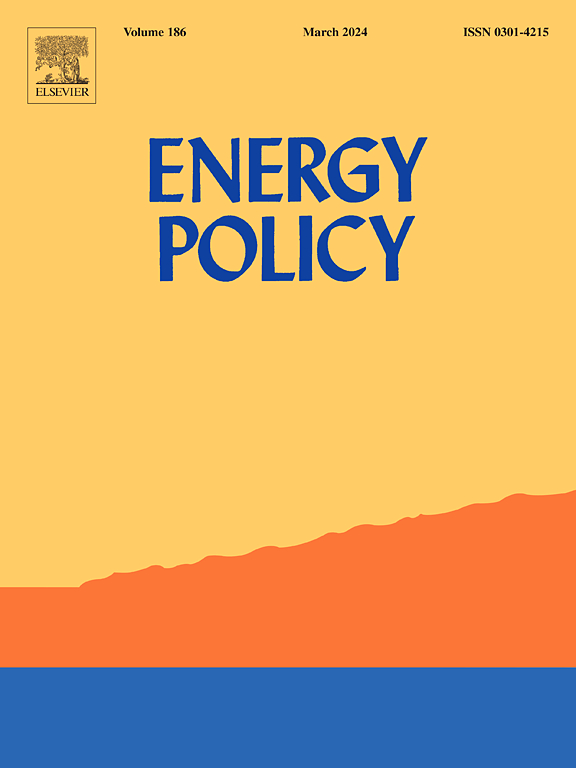意大利环境政策和绿色能源转型的技能偏向劳动力市场效应
IF 9.2
2区 经济学
Q1 ECONOMICS
引用次数: 0
摘要
环境法规和能源转型在减轻污染和劳动力动态方面发挥了重要作用,影响到倾向于技术的工人。虽然以前的研究已经解决了绿色能源转型和环境法规,但探索它们对技能偏向的劳动力的影响仍然有限。本研究整合了环境政策严格性(EPS)、绿色能源转型(GETR)和宏观经济指标来分析技能结构,重点关注1992年至2020年意大利的高技能(HSL)和低技能(LSL)劳动力需求。本研究采用新型动态模拟自回归分布滞后(DYARDL)模型和频域因果关系(FDC)检验,考察了变量之间的长期和短期关系,并探索了因果方向。研究结果有力地表明,变量表现出长期的协整性。此外,研究表明,由于严格的环境法规和向可再生能源的过渡,预计对高技能劳动力的需求将上升。相反,该研究强调,传统能源部门对低技能劳动力的需求可能会减少。在实施任何重大变革之前,应规范劳动力市场影响评估;加强社会安全网,缓冲过渡阶段;设立劳工监察单位,分析绿色转型对劳工市场的影响;将绿色投资定位于提高半熟练工人和非熟练工人的技能;简化监管框架;将绿色学徒制和技能模块纳入正规教育的主流。本文章由计算机程序翻译,如有差异,请以英文原文为准。
Skill-biased labour market effects of environmental policy and green energy transition in Italy
Environmental regulations and energy transition play an instrumental role in pollution mitigation and labour dynamics, impacting skilled-biased workers. While previous research has addressed the green energy transition and environmental regulations, the exploration of their impact on skill-biased labour has remained limited. This study integrates Environmental Policy Stringency (EPS), Green Energy Transition (GETR), and macroeconomic indicators to analyse the skill structure, focusing on high-skilled (HSL) and low-skilled (LSL) labour demand in Italy from 1992 to 2020. By employing the Novel Dynamic Simulated Autoregressive Distributed Lag (DYARDL) model and the frequency domain causality (FDC) test, our research investigates both the long term and short term relationships among variables, while exploring the causal direction. The study's findings strongly suggest that variables exhibit longterm cointegration. Moreover, the research indicates an anticipated rise in demand for high-skilled labour due to stringent environmental regulations and the transition to renewable energy. Conversely, the study highlights a potential decrease in the demand for low-skilled labour in traditional energy sectors. It is advisable to regulate labour market impact assessments before implementing any significant changes; strengthen the social safety net to cushion the transition phase; establish a labour monitoring unit to analyse evolving trends of the Green transition impacting labour markets; target green investments geographically to upskill semi-skilled and unskilled workers; simplify the regulatory framework; and mainstream green apprenticeships and skill-based modules in formal education.
求助全文
通过发布文献求助,成功后即可免费获取论文全文。
去求助
来源期刊

Energy Policy
管理科学-环境科学
CiteScore
17.30
自引率
5.60%
发文量
540
审稿时长
7.9 months
期刊介绍:
Energy policy is the manner in which a given entity (often governmental) has decided to address issues of energy development including energy conversion, distribution and use as well as reduction of greenhouse gas emissions in order to contribute to climate change mitigation. The attributes of energy policy may include legislation, international treaties, incentives to investment, guidelines for energy conservation, taxation and other public policy techniques.
Energy policy is closely related to climate change policy because totalled worldwide the energy sector emits more greenhouse gas than other sectors.
 求助内容:
求助内容: 应助结果提醒方式:
应助结果提醒方式:


